Eczema and children
Derma Solutions
The Psoriasis and Eczema Specialists
simple. natural. good
Eczema and children
If you have a child that's suffering from eczema then you probably heard the phrase 'Calm down It's only eczema!'. Unfortunately this dismissive attitude can not only come from friends and family but even some healthcare professionals. They don't seem to understand how devastating this condition can be! We fully understand the suffering you go through when your child is in pain and not sleeping which means you are not sleeping. This vicious cycle can quickly lead to an out of control downward spiral for you and your family.
We have spent years researching, refining and creating our skin balm specifically for children and adults who suffer from eczema and psoriasis. We have found success all over the world and we going to share with you the basics about eczema. Getting a good understanding about this skin condition is the first step in learning how to get it under control
Firstly some straight forward answers about eczema.
- Eczema is a chronic skin condition of which there is no known cure.
- Eczema can start at any age and will often appear in babies at or soon after birth.
- There are effective treatments on the market, but ongoing maintenance is needed otherwise eczema will return if treatment is stopped.
- Eczema goes through cycles of flaring and settling and there can be any number of triggers.
- It's estimated that one in five of all children suffer from it and this figure is growing.
- Dermatitis and eczema are in fact the same condition and the two names are interchangeable.
- Eczema (all types) are non infectious conditions.
- Eczema itself does not scar. However if eczema is not treated there is a danger of deep scratching which can scar. That is why it's vital to not leave eczema untreated.
- The vast majority of children will grow out of eczema as they get older. It can, however last for many years and in some small cases last for life.
- There are different kinds of eczema but the majority of cases is called atopic eczema. Atopy is a genetically inherited condition and can increase the likelihood of children developing eczema, asthma, hay fever, hives and allergies.
Why do children get eczema?
All children's and adults skin produces a natural oil as part of the skins defence mechanism. This oil's job is to moisturise and protect the skin. With eczema this protective layer becomes damaged and moisture starts to escape and irritant chemicals are allowed in which results in the skin becoming dry and inflamed. This is a complex process and science is yet to discover exactly why it happens however the main reason our Derma Solutions skin care range is so effective at treating eczema is because we ensure that our skin balm is very thick. Unlike other skin cream companies that add water (Aqua) to their formula to give the creams a light feel, we never add water to ours. This ensures a skin cream that completely seals off the affected area to irritants. The XBalm has been formulated to very closely mimic the skins own natural barrier.
The different types of eczema
Even though atopic eczema is by far the most common form of eczema in children there are other types of eczema to consider too. It's best to get your doctor to identify which type your child has so it may be better treated,
Atopic eczema - Most common form found in children.
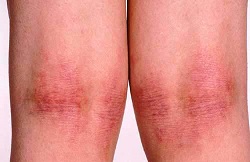
Infantile eczema - Affects children under one year of age.
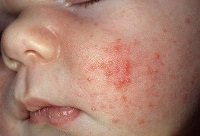
Extensor eczema - Can affect children aged between two and four years old.

Flexural eczema - Extensor eczema can develop into flexural eczema as the child gets older.
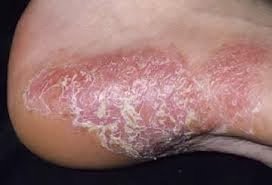
Discoid eczema - AKA nummular dermatitis or microbial eczema and it's more often found in adults.
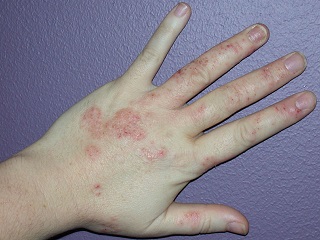
Seborrhoeic dermatitis - This mostly commonly presents itself as a scaly scalp and it can affect anyone of any age.
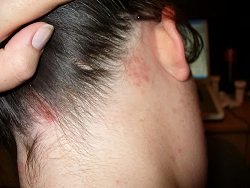
Pompholyx eczema - AKA dishydrotic eczema and is mostly found in adults and can be recognised by hundreds of tiny. fluid filled blisters under the skin.
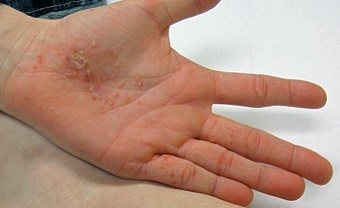
Juvenile plantar dermatosis - This most commonly affects young male children and is found on the feet.
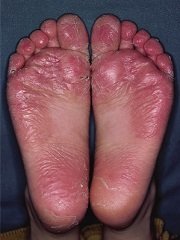
Non-atopic eczema - there are two types, allergic contact dermatitis and irritant contact dermatitis. Your doctor can do a 'Patch Test' to find out if your child has allergic contact dermatitis however it is a rare in children. Irritant contact dermatitis is caused by chronic irritation, an example of this would be nappy rash.
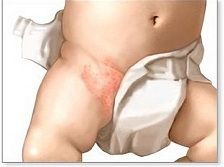
Hand dermatitis - As the name suggests this type of eczema affects the hands but can also affect the feet.
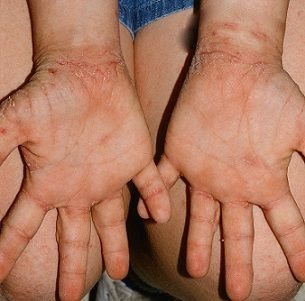
Derma Solutions XBalm and why it's important.
When you apply Derma Solutions XBalm certain things begin to happen.
- You are giving your skin a temporary replacement to it's own natural protective oil which, because of eczema, has broken down.
- You are helping your body retain moisture by leaving a layer of the XBalm on the skin.
- The balm also acts as a barrier to irritant compounds and allergens from reaching the skin itself.
- XBalm aids the hydration of the skin.
- Your skin starts to look and feel calmer.
- Your skin begins to heal.
As long as you re-apply Xbalm throughout the day all these things will happen, giving your skin the best chance of healing itself and it is completely safe to apply as much as you need. In fact the more you moisturise the better. One of the commonest cause of eczema flaring is not moisturising enough. Ideally you should be reapplying the XBalm four times a day and more than this is perfectly acceptable. The good news is that a little goes along way due to the fact that we never use water in our formula, only pure high grade natural oils and waxes. Our smaller 50ml tubs are for when you on the go and for convenience. But when you are covering your child in moisturiser properly four times a day then you should be going through our large 250ml tubs every week. This can often come as a shock to many parents who use far less than this but we have learned from speaking to countless parents that this is the best way to get the their child's eczema under control.
When applying the XBalm spread it out in the direction of the hair follicles, the reason for this is to ensure you are not blocking hair follicles. This is the correct method with any moisturises.
When applying a moisturiser you need to give them time to work. We often get emails stating that a customer has used our products once and then stopped using them as they saw no immediate improvement. We always recommend keeping with it for at least one week and always applying liberally and often. The results will astound you, as they did us! Most often though you will start to see improvements within a day or two or even much sooner.
Bath time and eczema
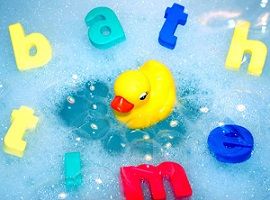
In our research to make the best skin cream possible for children with eczema we talked to a lot of health care professionals and we noticed that there seemed to be two schools of thought when it came to bathing (or showering) a child who suffers from eczema. Some health professionals argue that bathing is bad for eczema and will make it worse. Some even suggest bathing as little as twice a week! Others, on the other hand feel it is a excellent way to treat eczema in children and even suggested multiply bathes per day.
We feel that one bath a day is a good compromise but only as long as soaps are avoided. A soap substitute should be used as soaps can have a drying and a irritant effect on eczema. Even if the advertisers claim fragrance free or PH neutral or child friendly, our experience has been that it's generally better to leave all soaps alone. The same goes for bubble baths, shampoos, shower gels etc.. There are some brilliant soap substitutes on the market now and your health care professional will be able to recommend the best one for your child.
Once your child is washed and dried it's important to add a second layer of XBalm to keep the skin hydrated.
You will notice that your child's eczema often will look angry and very red at bath time. This is due to the blood vessels in the skin dilating due to the warm water and it's nothing to worry about. Another contributing factor is the rubbing of moisturiser onto the skin and the drying off with the towel can all have a short term 'angry' effect on the look of the eczema.
Swimming
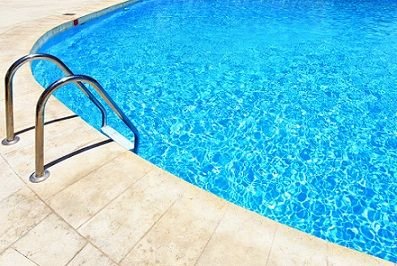
Most parents will tell you that swimming will flare up their child's eczema and this is because of the presence of chlorine in the pool which is an irritant. However if your child is feeling left out because they can not swim a layer of XBalm will go along way in creating a barrier between the water and the child's skin. Afterwards use your soap substitute to get all the chlorine off and reapply the XBalm.
Sleeping

One common thread with nearly all parents of children with eczema is lack of sleep. Poor sleep quality is without doubt one of the most stressful and difficult aspects of looking after a child with eczema which can make everyone miserable. However there are a few things we can consider to make night times less stressful.
Something that we hear all the time is how children's eczema seems to worsen at night and there are a few reasons why this is so.
One of the obvious reasons was the heat. Heat from blankets, a warm bed and central heating all contribute. While this heat does not cause a flare up it can make eczema itchier and that's when children scratch.
There are other reasons which contribute such as how children are more distracted during the day which gives them something else to think about other than scratching. But at night there is not much else to occupy their thoughts so their thoughts turn to scratching.
Keeping the affected area well moisturised before bed time is a must and taking steps to cool the room down will also help. You obviously don't want your child to be cold so it can be a tricky to get the right room temperature but it will be worth taking the time to get this right..
We recommend using light cotton bed cloths, summer duvet's and fewer blankets. Turning down the heating is also good and you may consider opening a window.
Keeping fingernails short and filed is always a good idea too.
If your child's skin is very dry then we recommend wrapping which we talk about below. With this treatment your child's eczema gets treated while they sleep!
Wet wrapping
This is normally done by a specialist as it can be difficult to do and is only really considered for extreme cases of eczema. The child is first covered in moisturisers and steroid ointments, then a layer of bandages soaked in water is applied. Over this a second dry bandage is placed on top. As the first layer dries out more water can be applied and the outer layer replaced. Although the treatment is effective care must be taking not to use wet wraps if an infection is present.
Dry Wrapping
This method is particularly good for severe flare ups in adults, children and babies. Cover the affected area with a thick layer of Xblam and then is wrap in a bandage. Just like in wet wrapping however this method must never be used if an infection is present and always check with your doctor if you want to use steroid creams. We only advise this to be done with either our XBalm as it is perfectly safe and effective to use with this method.
A simple and safe home technique for babies is to use a old baby grow over the skin creams. This will prevent stains on the bedding and the moisturiser will soak in overnight.
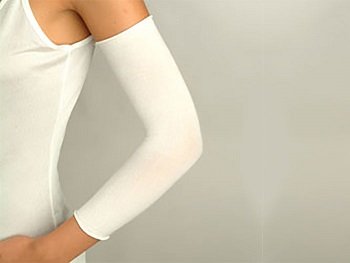
Anti-histamines
A doctor will prescribe anti-histamines to help with scratching and sleeping. Histamine is a chemical produced by the body as part of the allergy pathway and leads to inflammation and itching and anti-histamines block the histamine chemical which in turn reduces inflammation and itching. They can also have a sedating effect and make children sleepy. Your health care expert will explain the options available for your child.
Eczema Flares
We understand how desperate parents can get when looking for an answer to why their child's eczema is flaring all of a sudden. It may have been calm for weeks or even months and then suddenly...
There could be a number of causes to sudden flares but the nature of eczema is that it has a process of flaring and settling and it can be extremely hard to identify exactly what is causing it. There could be a food allergy that's responsible, which is why it's a good idea to keep a food diary to identify inflammatory foods. People that follow our Jum Diet will be able to spot any potential food allergies fairly easily. It may be an infection, which is why it's paramount that you recognise when your child's eczema is infected so you can get the correct treatment.
During winter months most people report that their eczema gets worse. This could be because of a lack of sunshine, dampness, chill in the air and changes in humidity levels. Whatever it is there is a definite uptake in reports of more sever flare ups during winter months so care must be taking to keep the affected areas moisturised. We also suggest wearing loose comfortable clothing, preferably cotton. However in winter this is not always practical and heavier winter clothing may also be a cause of flares.
Stress 
Stress is also a well known cause of flares, school exams, starting new schools or other stressful events can all lead to compounded problem of being stressed about the event and then doubly stressed about the eczema. It's important to try and stop these cycles and your health care professional may recommend a strong steroid based ointment in these cases.
Hormones can also affect eczema although this is not very well understood as it is an extremely complicated process, however some woman and girls report flare ups at the time of having their period. Pregnancy has been known to settle eczema but it has also been reported to make it worse.
The goal with all flares is to catch them early so try not to let the patch get established before treating it.
Myths about flare ups

A lot of companies that sell water softening machines claim that hard water makes eczema worse. This has been proving not to be true so if you live in an area with hard water it is not a risk to your child's eczema.
Washing powders also get the blame for flare ups but there has been studies that reported no difference between biological and non-biological washing powders. Fabric conditioners however may be best avoided.
We also hear from some adults that are worried about exercising as the excessive sweat may cause a flare. As long as you moisturise before and after exercising and drink plenty of water this should not be a problem.
How to lower the probability of flares
Your first thought should always be to treat your skin well. Keep it moistened with XBalm and do this even when you are eczema free and keep away from known irritants like soap.
Under treatment of eczema is extremely common and is one of the most common reasons of flares. That's why we always advise to use XBalm every day and reapply often. We have found that customers who reapply four times a day have the best results. Consistency is key to controlling flares.
Some parents give in to their child's demand for something like a bubbly bath every now and then but these types of irritants can set off a flare and in the long run are just not worth doing.
Infections and how to spot them
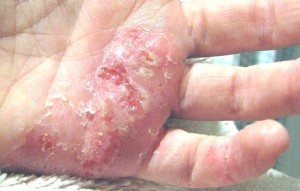
If you notice that your child's eczema has gone weepy and crusty it is a sure sign that it has a bacterial infection and it's the bacteria that normally live in harmony with us on our skin that is the common cause. Because of the nature of eczema these bacteria are able to get into the skin through lesions rather than simply living on it and that's when the infection sets in. Eczema is generally a dry skin condition, but when it becomes infected it becomes wet so a very simple way to tell if the area is infected or not is to see if it is wet or dry. If you suspect it is an infection then help from your health care professional should be sought before anything else as this could lead to more serious health issues for your child. Putting on antibacterial cream will not generally work in these cases.
One way to reduce the possibility of an infection is to keep the skin well moistened which will mean fewer, if any, breaks in the skin for the bacteria to get into and infect. However some children are more prone than others to infection and this is a difficult situation for parents. Some doctors recommend bleach baths for these children, and that has been showing to work, but your doctor will advise the best and safest treatment for your child.
Drink enough water
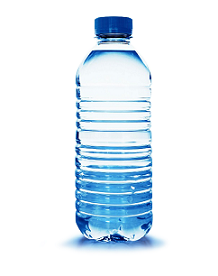
One important point which is often overlooked by many healthcare professionals is water consumption. Make sure you drink enough water every day as it's been suggested that people with eczema lose more water through their skin than people without eczema. A rough guideline is 1 liter (5 glasses) for 5 - 8 year olds, 1.5 liters (7 glasses) for 9 - 12 year olds and 2 liters (8/10 glasses) for 13+
Reasons treatments fail
Here are 6 common reasons that children do not get better
- Using non-specialist health care professionals who prescribe inappropriate solutions. Always try to find a specialist in your area when it comes to eczema.
- Not using the right moisturiser. We have formulated our Xbalm specifically for eczema and psoriasis patients and have consulted with Doctors and Dermatologists to get it right. Many OTC skin creams will not be adequate or will often have irritants in the formula.
- Not using enough moisturiser. This is critically important, apply liberally and often. Four times a day or more, it's always better to have too much than too little.
- Using soaps, bubble baths, shampoos etc.. If your child has eczema then all these things should be avoided.
- Not treating infections with the urgency they require. Your child needs to see a doctor if you suspect they have an infection and moisturises or steroid creams may not be effective in these cases. Your doctor will advises you on the best way forward.
- If your doctor prescribes a steroid based cream make sure to follow the correct dosage instructions. Many Doctors report that patients fail to do this.
What our skin cream range can offer you is a good nights sleep and a calmer, happier child. Our XBalm has been tried and tested and still hand made with the highest quality ingredients available.
We hope you found this article useful and from myself and all the Derma team we wish you an itch free day:)
Scott
Very helpful article thank you.
Thank you havok777. I think I may have messed up the tag system on this one. I'm still new here but very excited to be part of the steem community. Every post is a learning opportunity atm:)
Congratulations @dermasolutions! You have completed some achievement on Steemit and have been rewarded with new badge(s) :
Click on any badge to view your own Board of Honor on SteemitBoard.
For more information about SteemitBoard, click here
If you no longer want to receive notifications, reply to this comment with the word
STOP